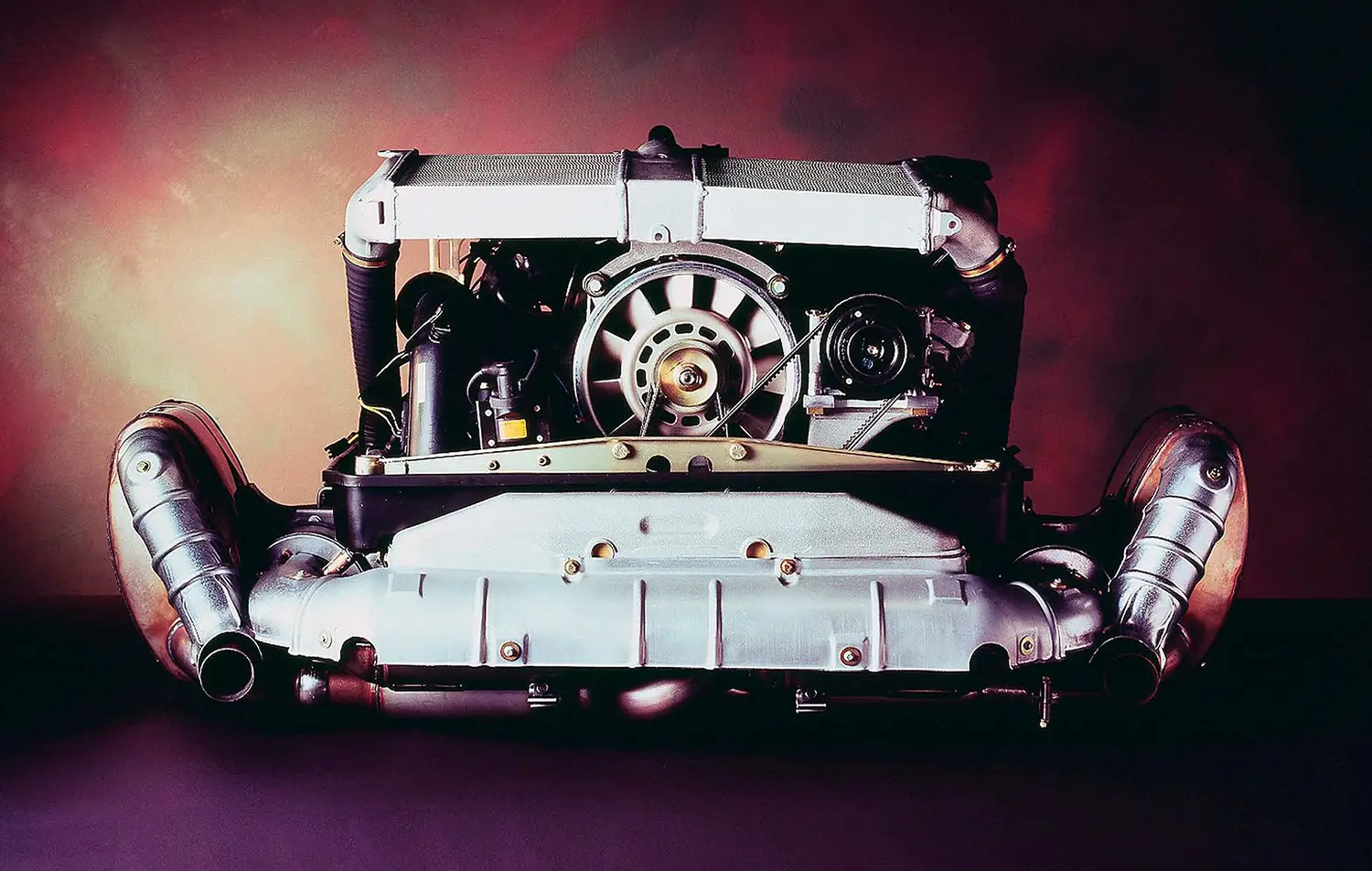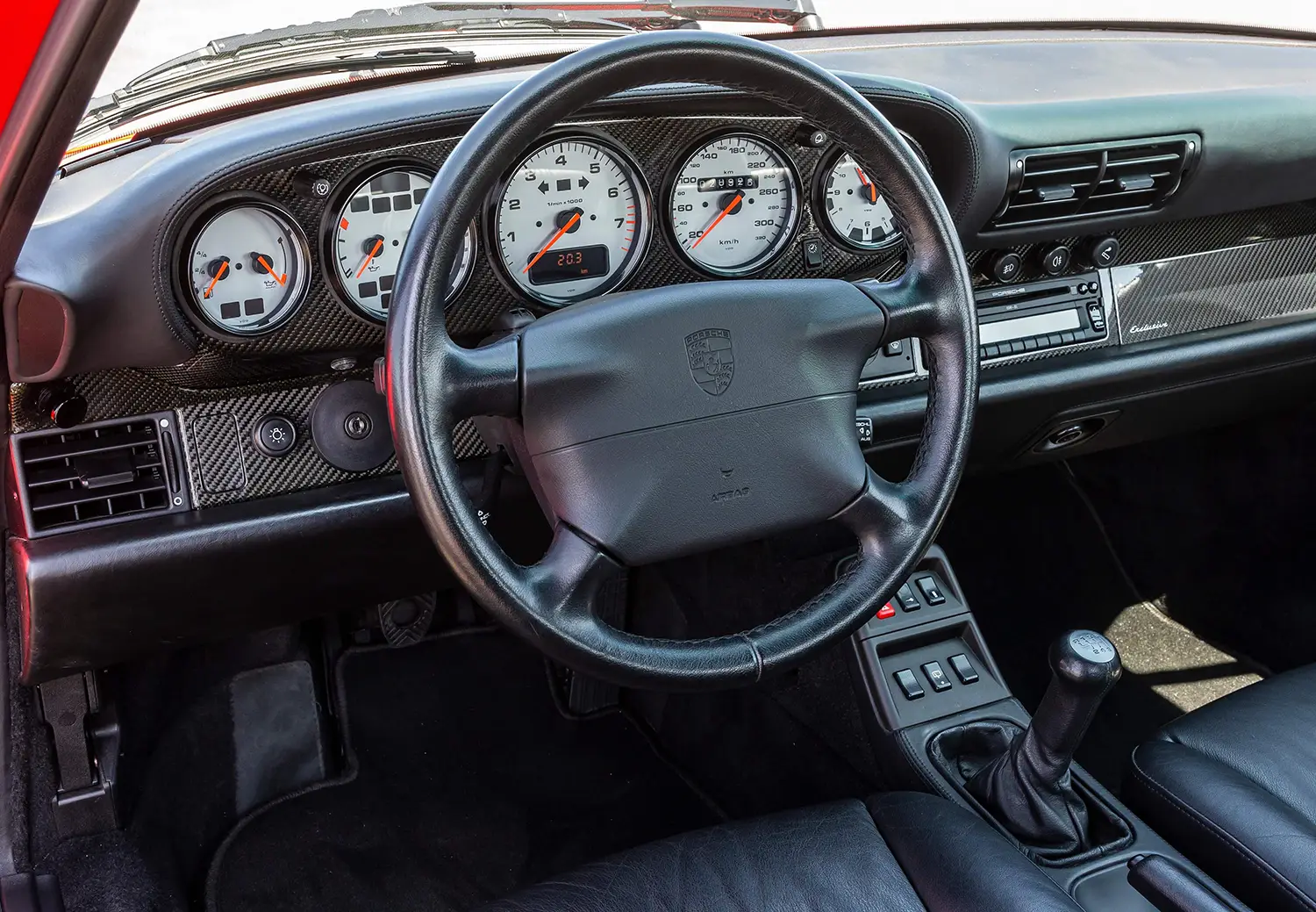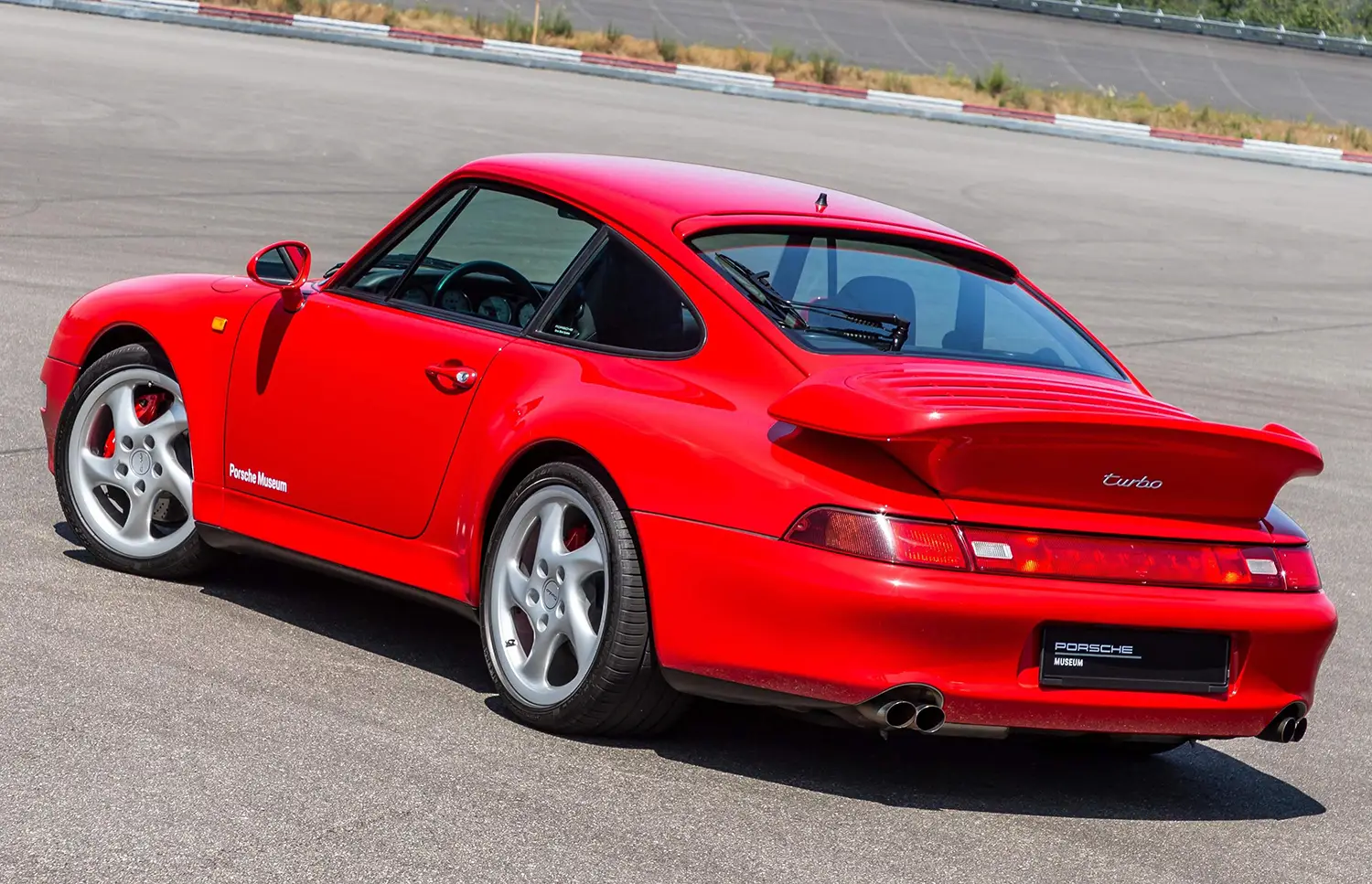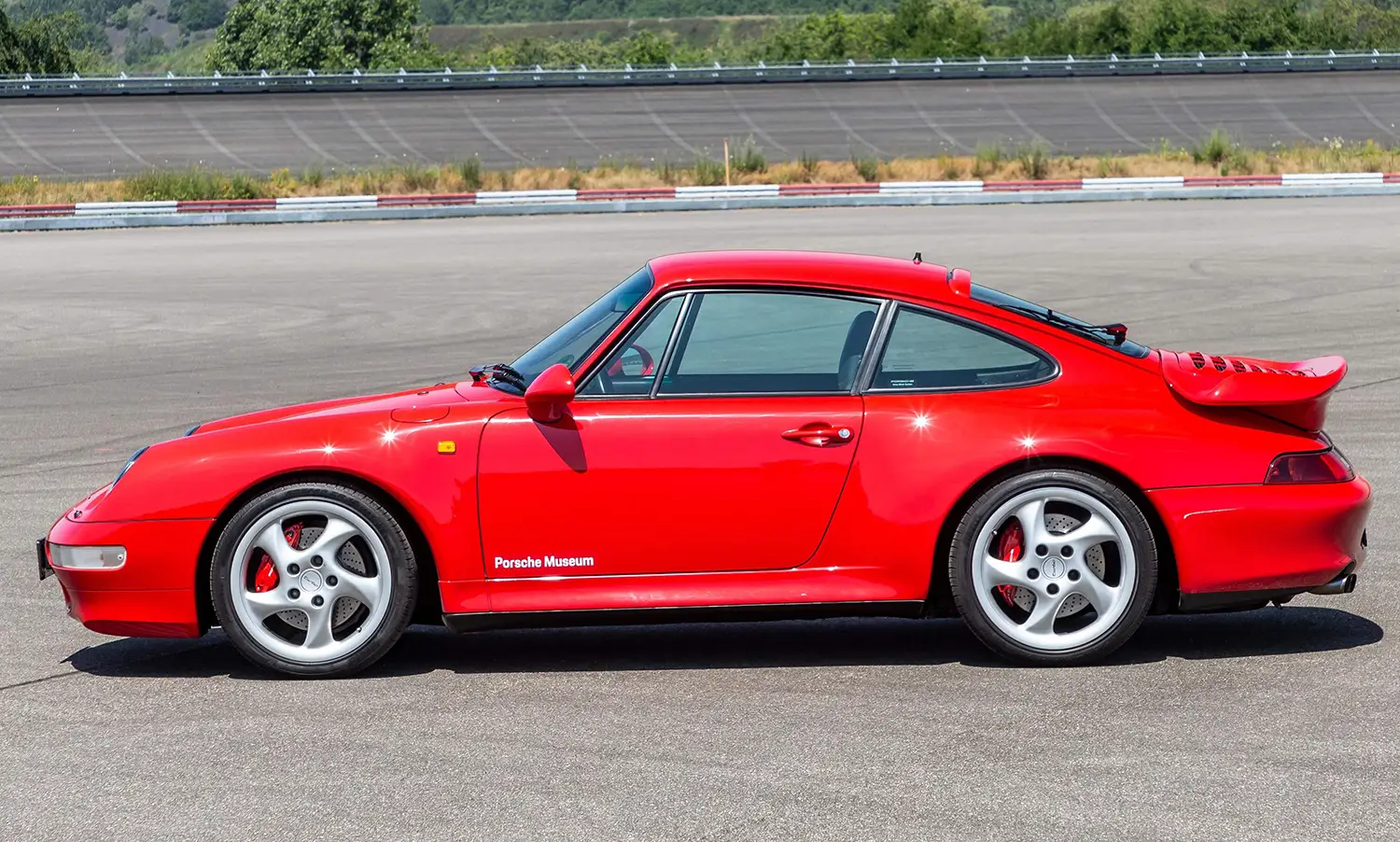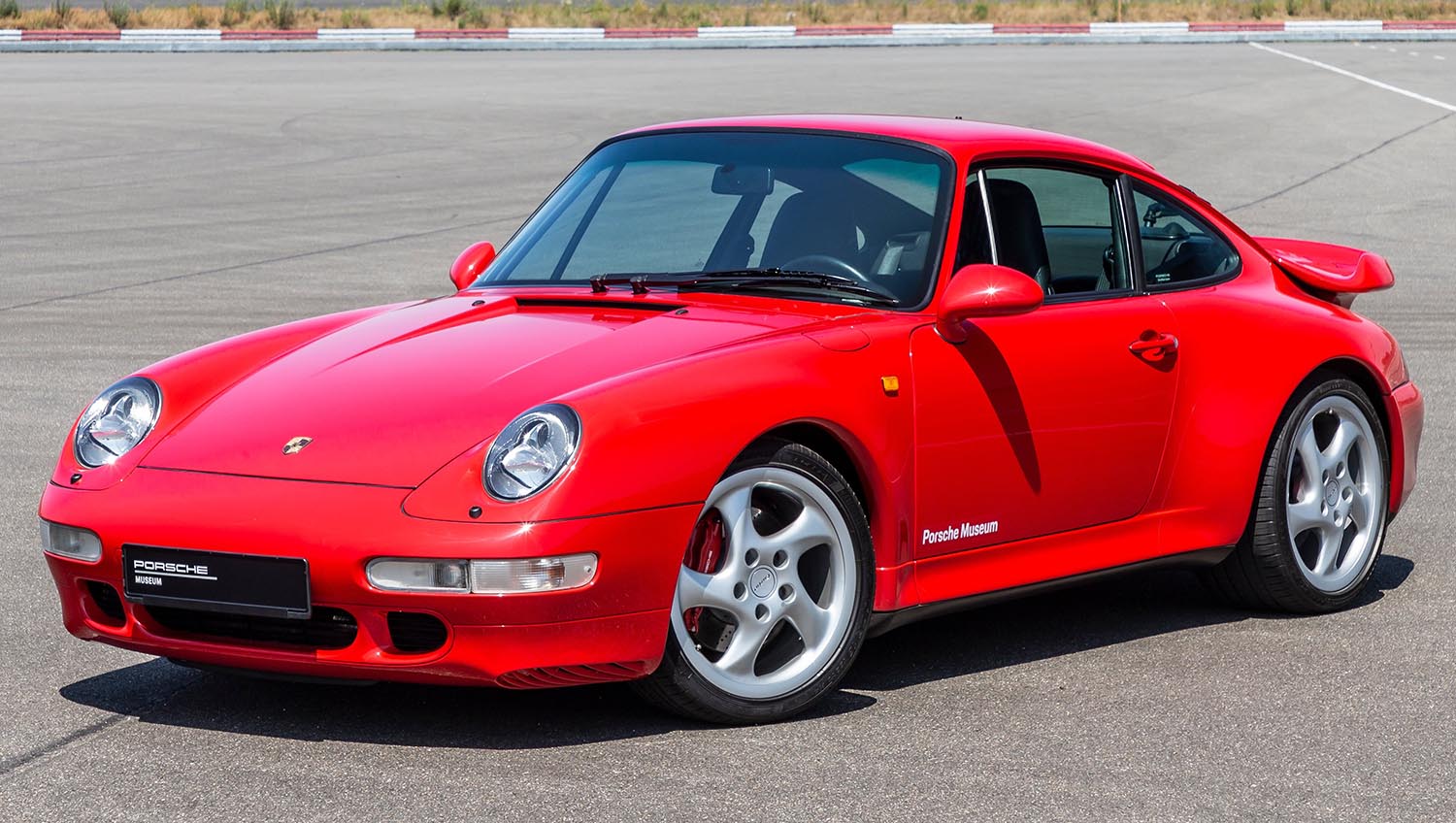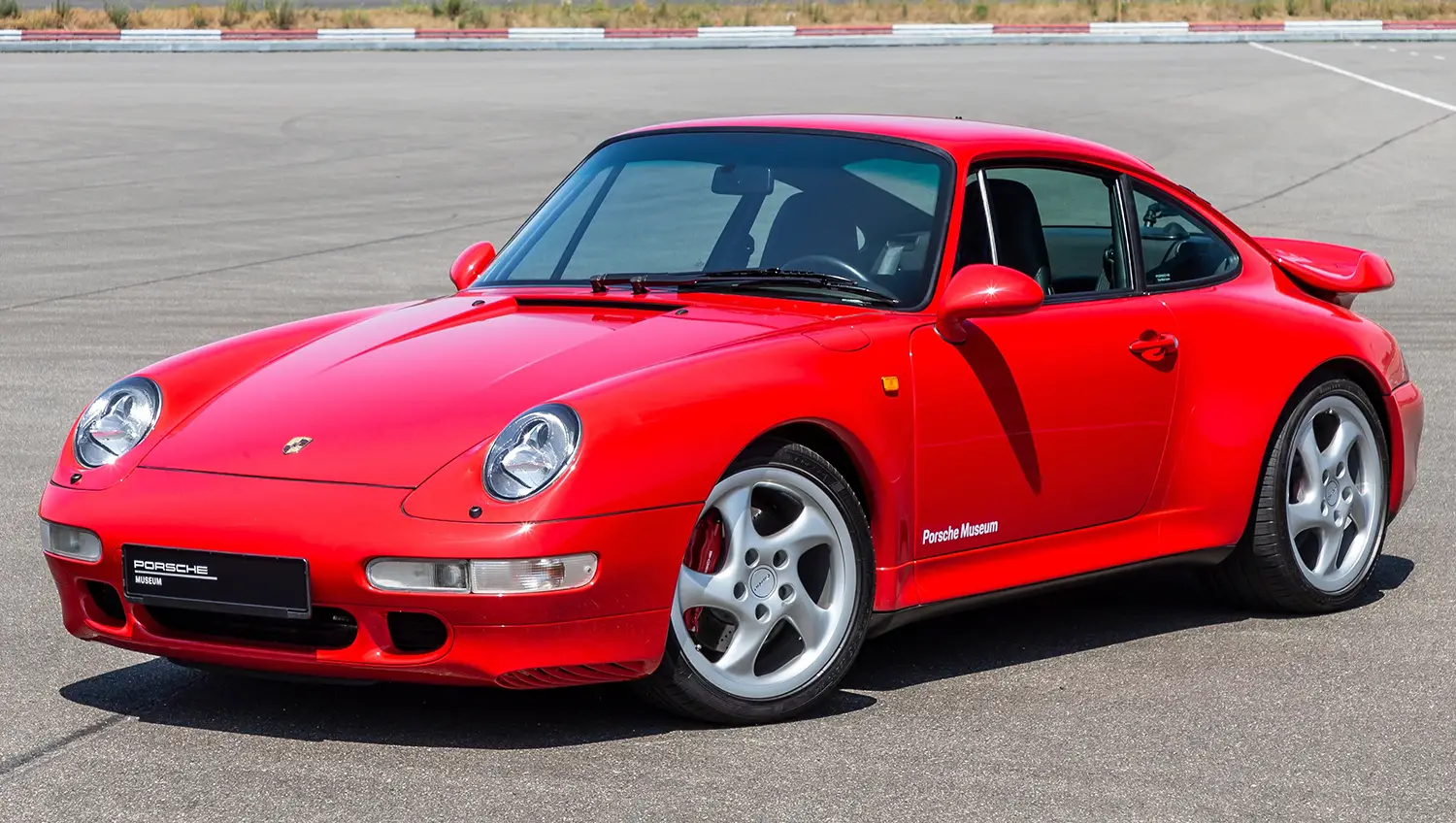
The 1995 Porsche 911 Turbo from the 993 generation is widely regarded as one of the most desirable and technically significant editions of the classic sports car. Although practically only the roofline was carried over from its predecessor, the 993 impressed with an exciting, modern interpretation of the 911 design DNA, featuring integrated bumpers, flush-mounted windows, and a wide, powerful stance.
The Last Air-Cooled Turbo
The 993 generation holds a special place in the Porsche timeline because its flat-six engine was the last to feature the classic air cooling system, a defining trait of the 911 lineage for 35 years. For the 1995 911 Turbo, this venerable engine was taken to new heights.
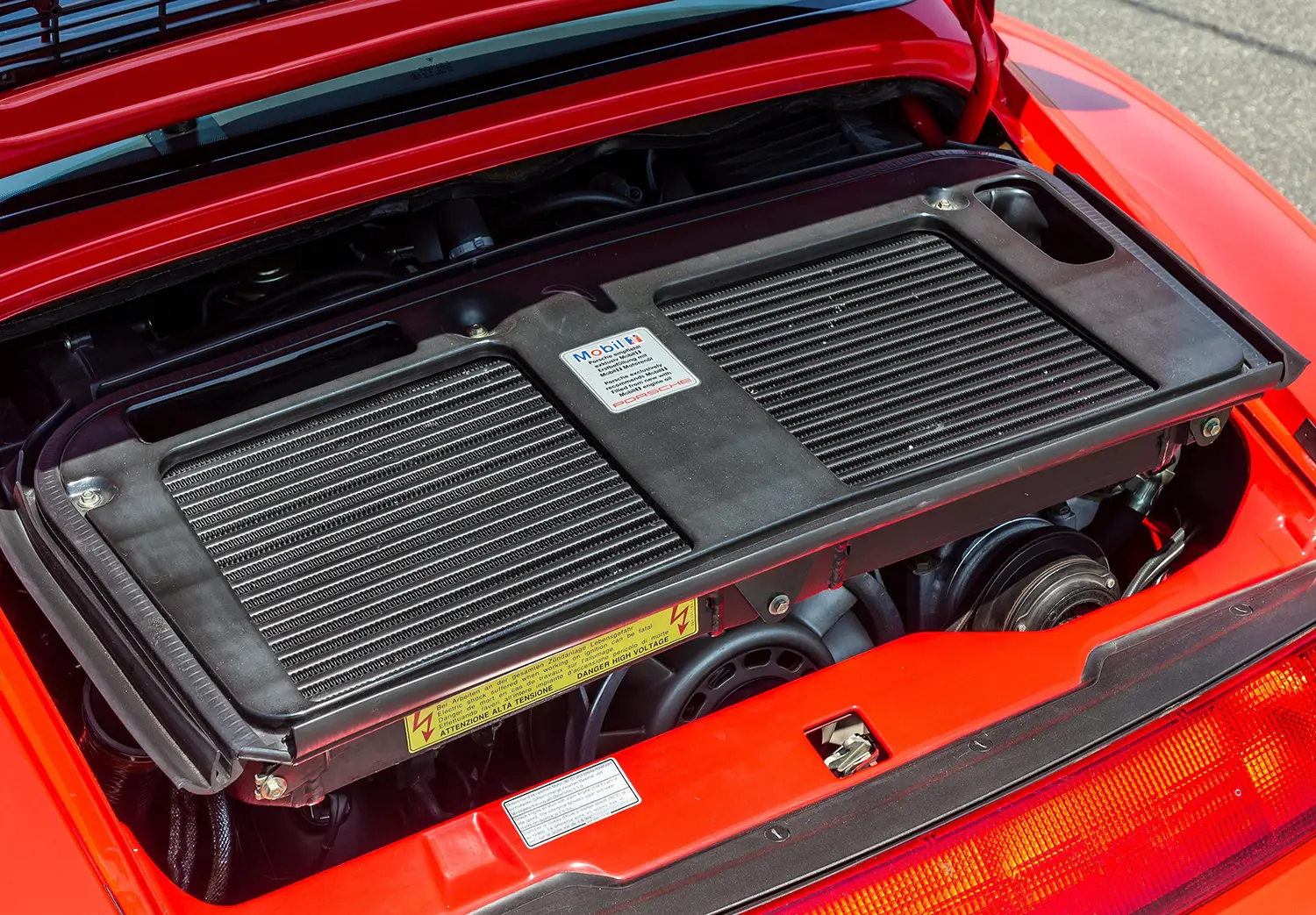
The 3.6-litre unit featured twin-turbochargers, or biturbo, a first for the standard 911 Turbo model, yielding an outstanding 408 PS (402 bhp) of power. This setup dramatically improved throttle response compared to single-turbo predecessors. At the time of its release, this twin-turbo engine was notable for boasting the lowest exhaust emissions of all series-production units in its class, demonstrating that performance and environmental consideration were not mutually exclusive.
All-Wheel Drive and Chassis Mastery
To effectively manage its formidable power, the 1995 911 Turbo was fitted with standard all-wheel drive, a technology adapted from the 911 Carrera 4 that was lighter and more efficient than previous all-wheel drive systems. This integration of the all-wheel drive concept was another first for a standard 911 Turbo, providing unparalleled command and stability on a twisty road or track, thereby taming the formidable power delivery of the turbocharged flat-six.
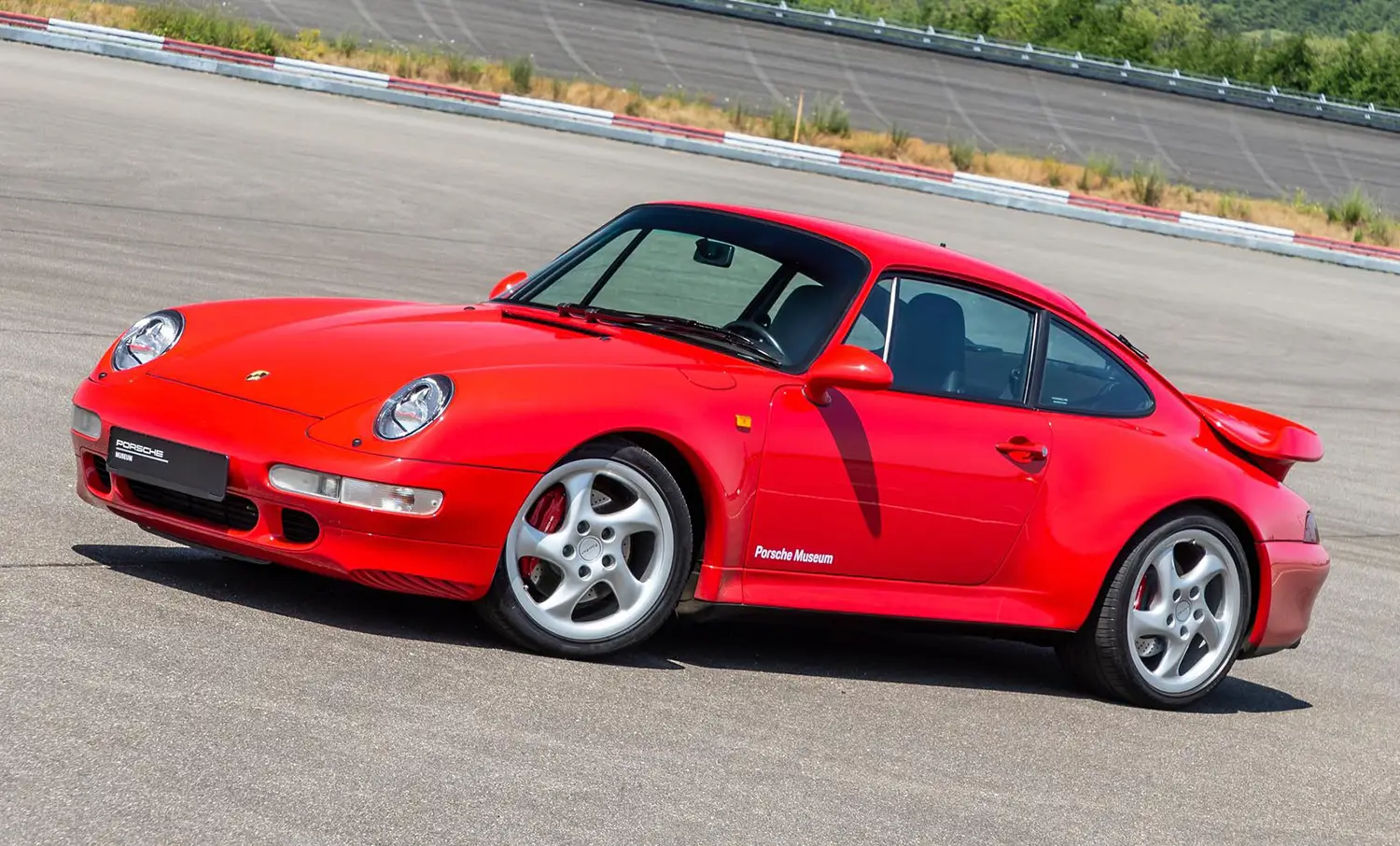
Underpinning the 993’s enhanced driving dynamics was a completely redesigned LSA (Lightweight-Stable-Agile) aluminium chassis. The new multi-link rear suspension is often cited as the ultimate evolution of the “Weissach” rear axle. This design combined lightweight construction with enhanced stability and agility, resulting in improved handling and superior suspension comfort compared to earlier 911 generations.
Design and Detail
The 911 Turbo visually emphasised its performance with several key design modifications. Like the Carrera 4 and 4S, the Turbo featured a wider body and chassis. The front end incorporated a flatter design, made possible by new polyellipsoid headlights, which quickly found widespread approval for modernising the 911 look while retaining its essence.
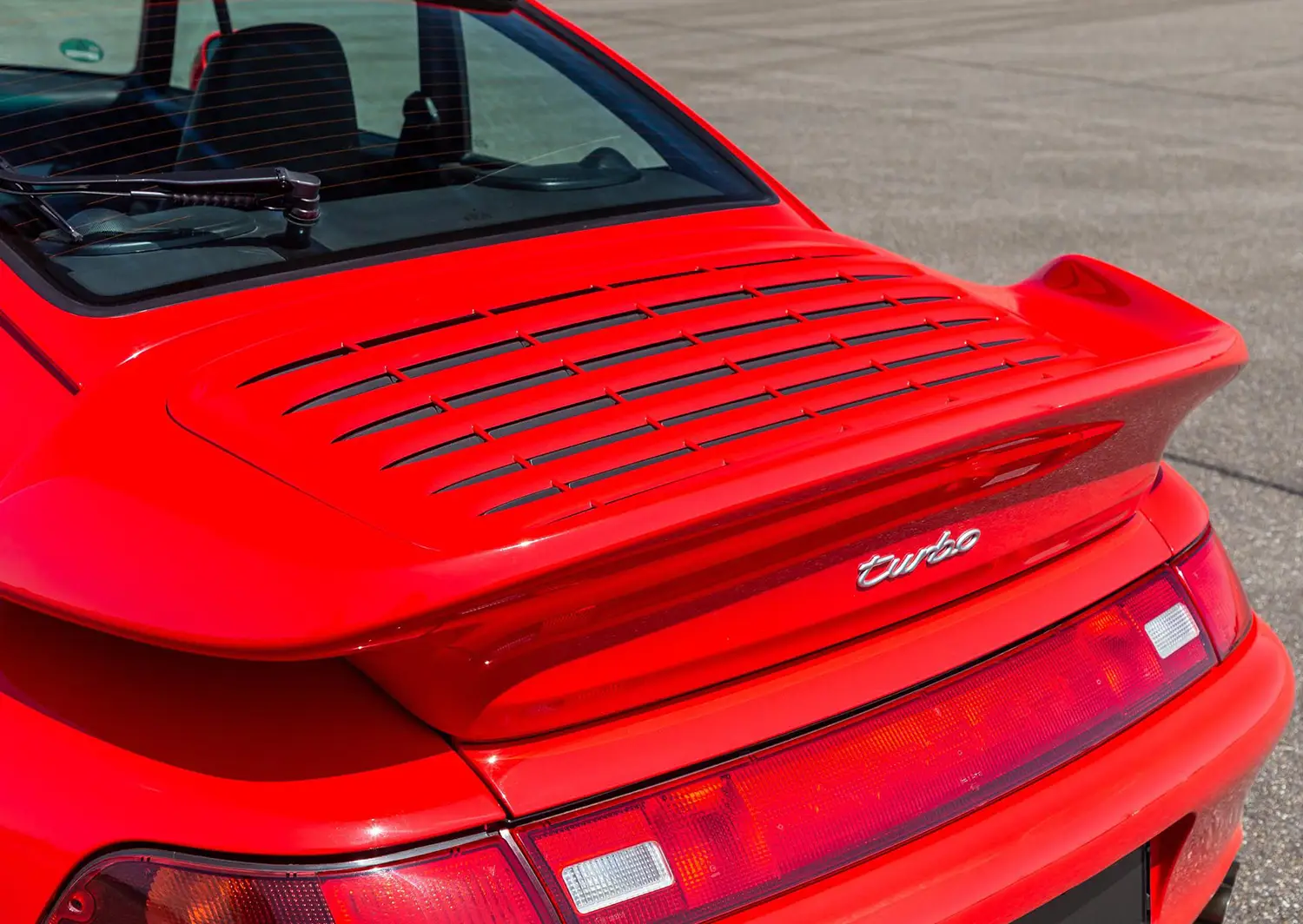
The Turbo model was further distinguished by redesigned front and rear bumper mouldings, a fixed “whale tail” rear wing that was fully painted in the vehicle colour and housed the necessary intercoolers, and unique 18-inch alloy wheels with hollow spokes to reduce unsprung weight. These details completed the image of a focused, high-performance machine. For those seeking the absolute extreme, a highly limited 911 GT2, a rear-wheel-driven version, was also released, with an even higher output of up to 450 PS.
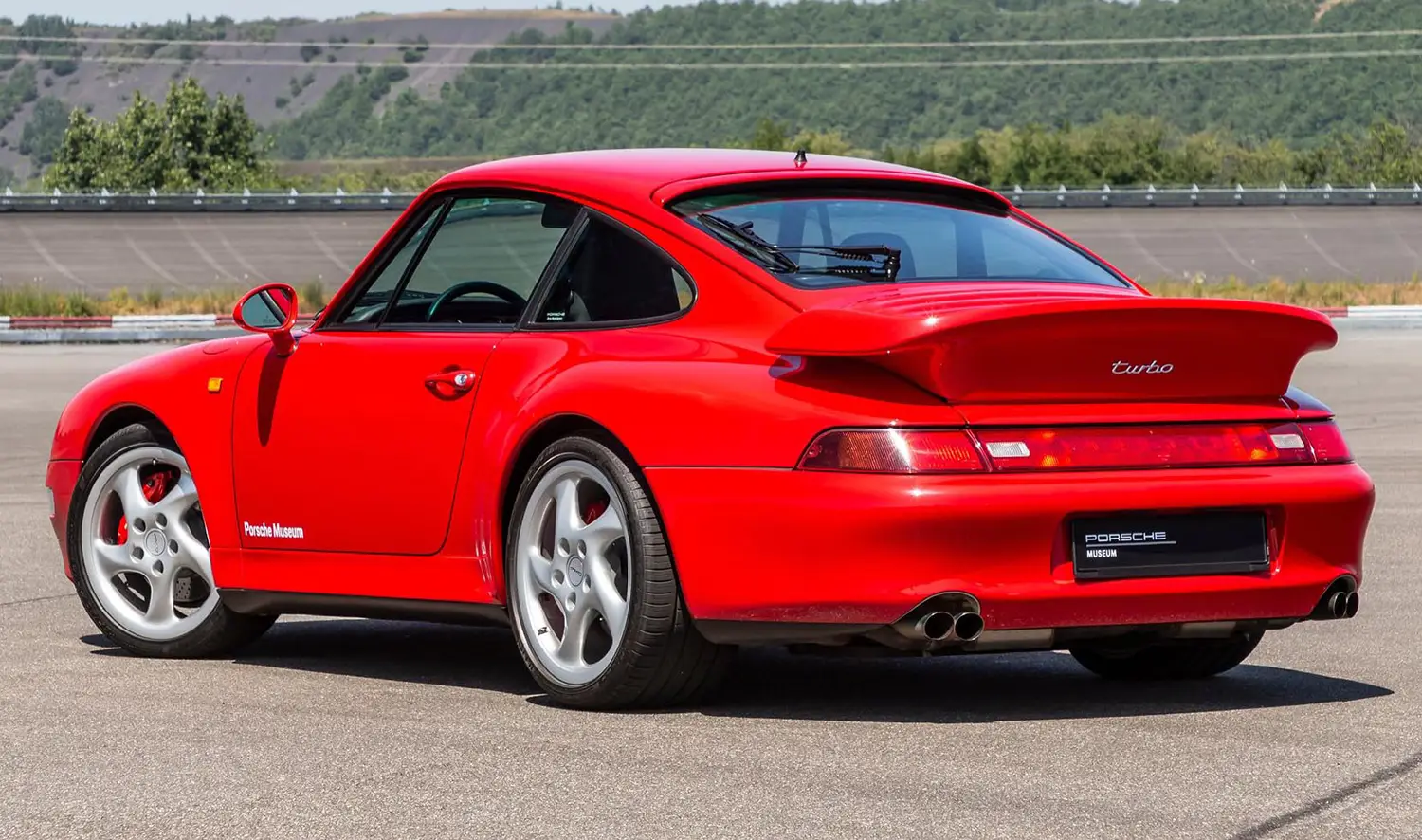
The 993 generation, which ended its production run in 1998, remains a collector’s darling. With a total of 68,881 vehicles produced, it represents the final, perfected chapter of the air-cooled 911, a unique blend of classic engineering character and modern technical innovation that launched a new era of success for Porsche.
Disclaimer: Content on this site is for informational purposes only. Vehicle specs, pricing, and availability may change. Always verify details with official sources before making decisions. Opinions are those of the authors.
Source: Porsche
